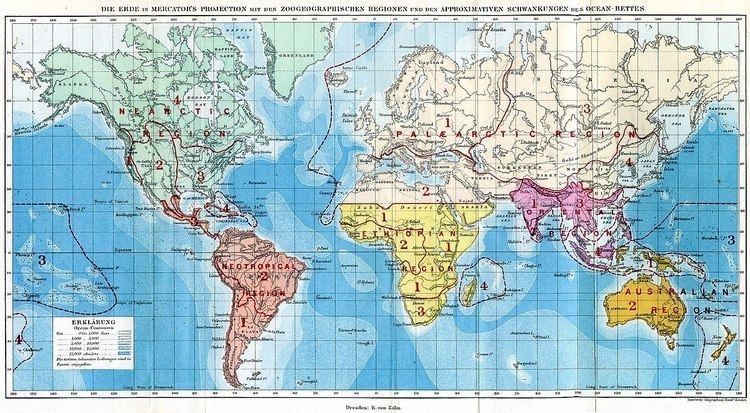 | ||
Zoogeography is the branch of the science of biogeography that is concerned with the geographic distribution (present and past) of animal species.
Contents
Zoogeographic regions
Schmarda (1853) proposed 21 regions, while Woodward proposed 27 terrestrial and 18 marine, Murray (1866) proposed 4, Blyth (1871) proposed 7, Allen (1871) 8 regions, Heilprin (1871) proposed 6, Newton (1893) proposed 6, Gadow (1893) proposed 4.
Philip Sclater (1858) and Alfred Wallace (1876) identified the main zoogeographic regions of the world used today: Palaearctic, Aethiopian (today Afrotropic), Indian (today Indomalayan), Australasian, Nearctic and Neotropical.
Marine regionalization began with Ortmann (1896).
In a similar way to geobotanic divisions, our planet is divided in zoogeographical (or faunal) regions (further divided as provinces, territories and districts), sometimes including the categories Empire and Domain.
The current trend is to classify the floristic kingdoms of botany or zoogeographic regions of zoology as biogeographic realms.
Following, some examples of regionalizations:
Sclater (1858)
Creatio Palaeogeana
Creatio Neogeana
Huxley (1868)
Huxley (1868) scheme:
Wallace (1876)
Trouessart (1890)
Scheme by Trouessart (1890):
Darlington (1957)
First scheme:
Second scheme:
